The Little White Queen
By Mathieu Georis & Théo Hanosset
Short animated movie – in progress
15 ‘ – 2020
Ozù Productions & Xbo Films
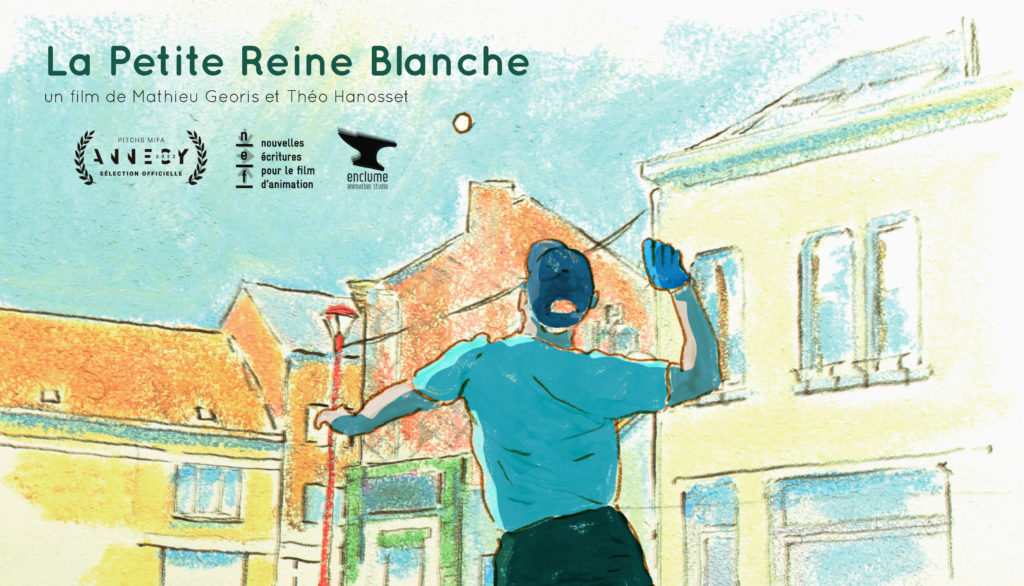
The Little White Queen – Mathieu Georis et Théo Hanosset
Synopsis
Plunged into the warm darkness of a summer night, the streetlights of Ottignies illuminate cars floating in the air. The next morning, an hourglass-shaped crop circle appears on the Place du Centre, now a car park. Two teams of pelota ball, a local sport that was driven out by the car more than 30 years ago, confront each other, bringing traffic to a complete halt.
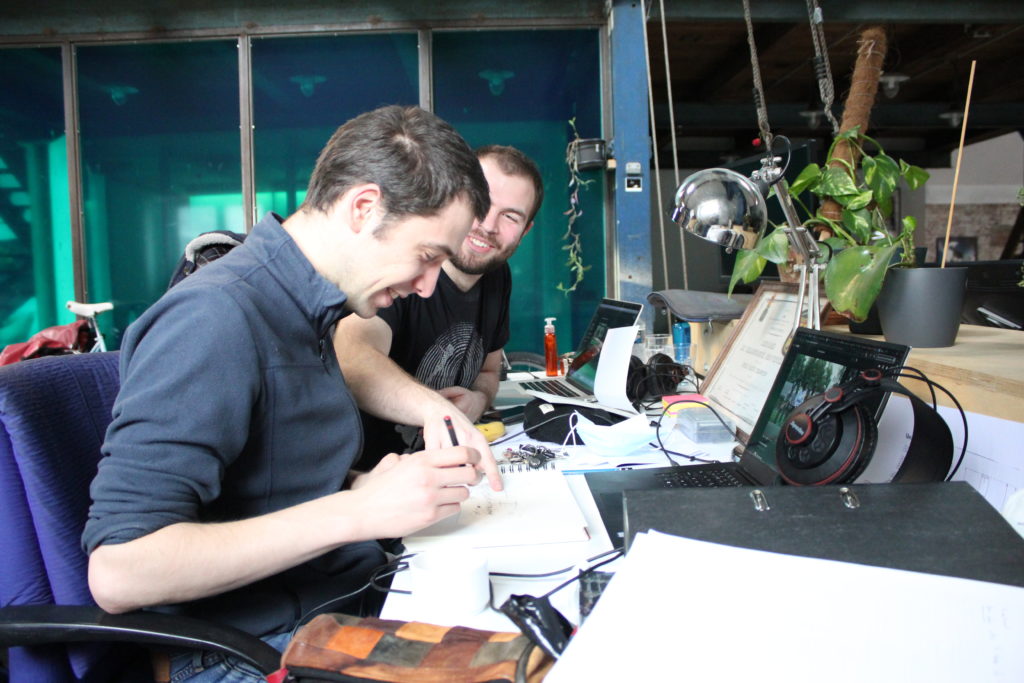
Writing residency at the Atelier de l’Enclume – 2021 – Brussels 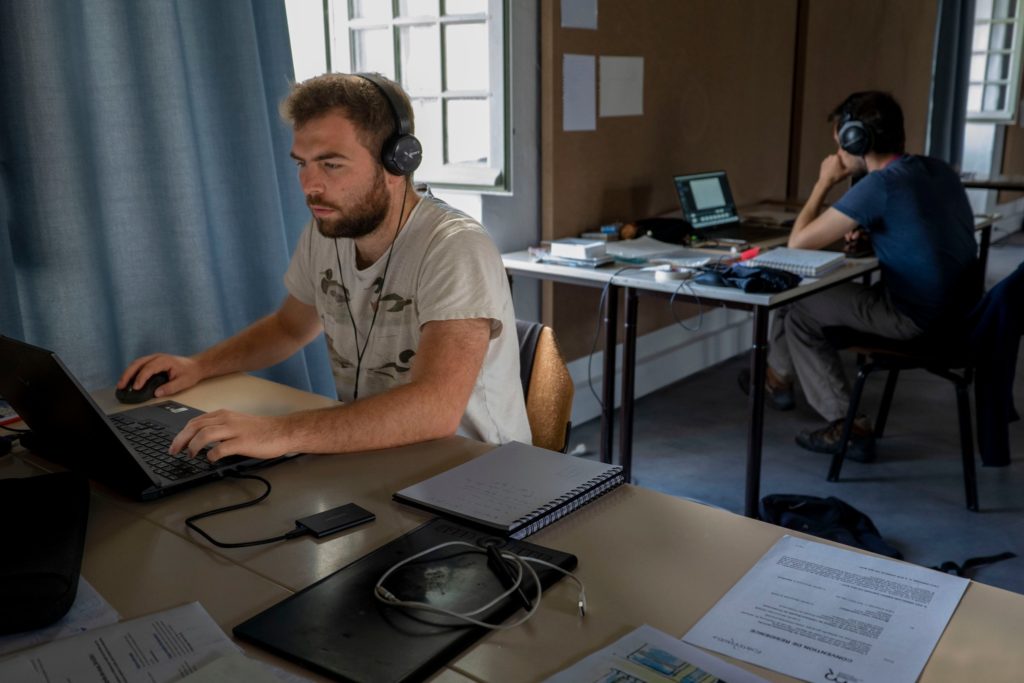
NEF Animation residence in Fontevraud – October 2022 © A. Pilot 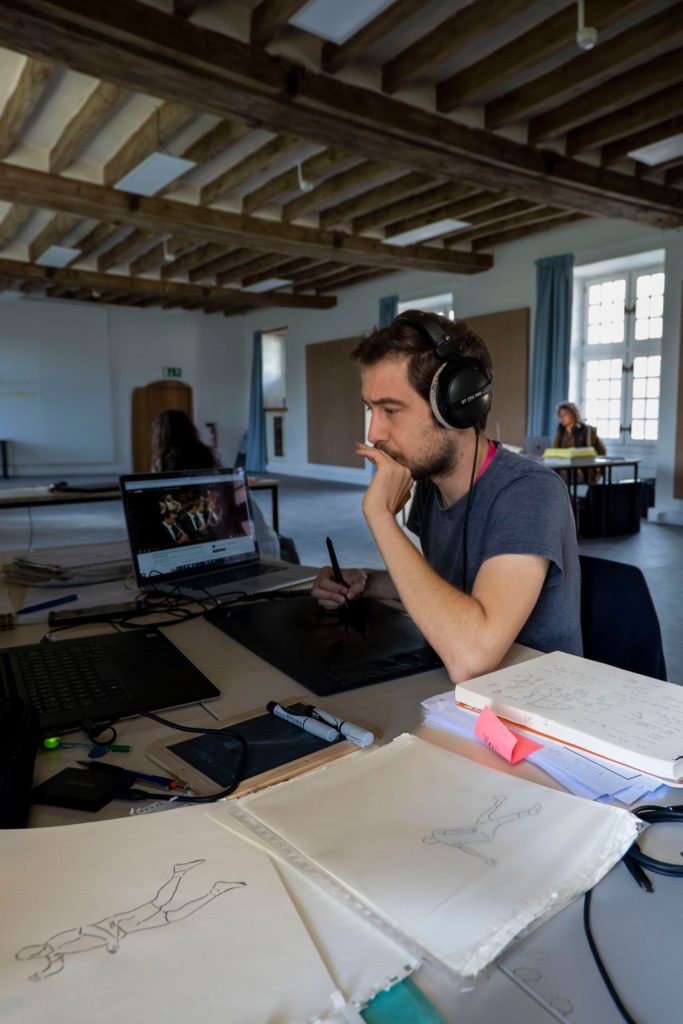
NEF Animation residence in Fontevraud – October 2022 © A. Pilot 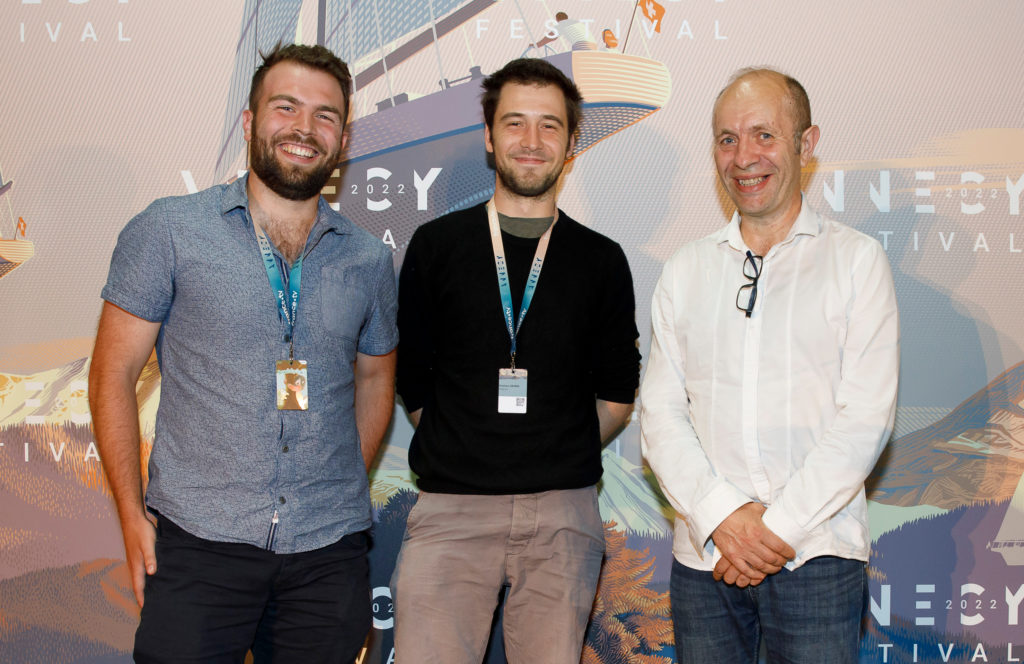
MIFA Pitch Awards – NEF Award Winners – Annecy Festival 2022 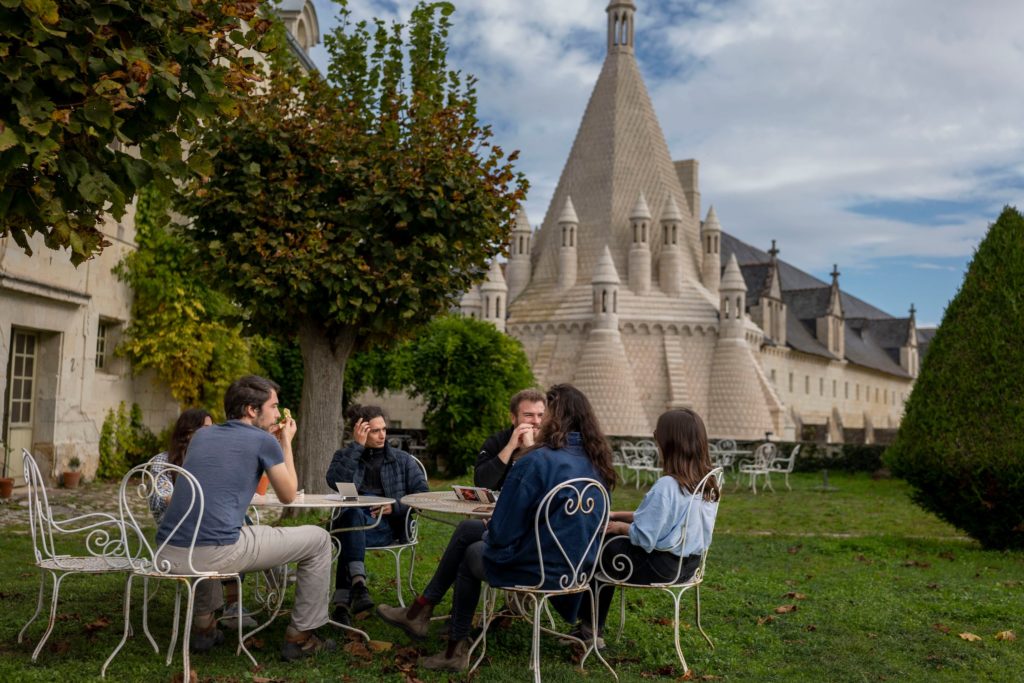
NEF Animation residence in Fontevraud – October 2022 © A. Pilot
INTENTIONS
PUBLIC SPACE AND MEETING PLACES
The public space has the capacity to bring together cultural and sports institutions in a neutral area accessible to everyone. Therefore, in the same way as festivals, religious processions or carnivals, sport can be a vector of spontaneous assemblies.
Starting with a reflection on the pelota ball, a very popular game of palm in Wallonia, we wish to address the universal questions of the urban evolution of our society and the use of public spaces. The decline of this discipline, which used to be played on pavements and village squares, is a direct testimony to this. Indeed, the loss of collective places, linked to the privatization of public space for the benefit of real estate and cars are the real issues of the film.
Moreover, following the COVID-19 crisis, we were able to observe how important these places are in the rural and urban landscape. At a time when private gatherings were forbidden, the outdoors recovered its role as a social mediator.
Through The Little White Queen, our aim is to reposition the pelota ball in the centre of the villages and, by this means, to question the private/public relationship in the territory.
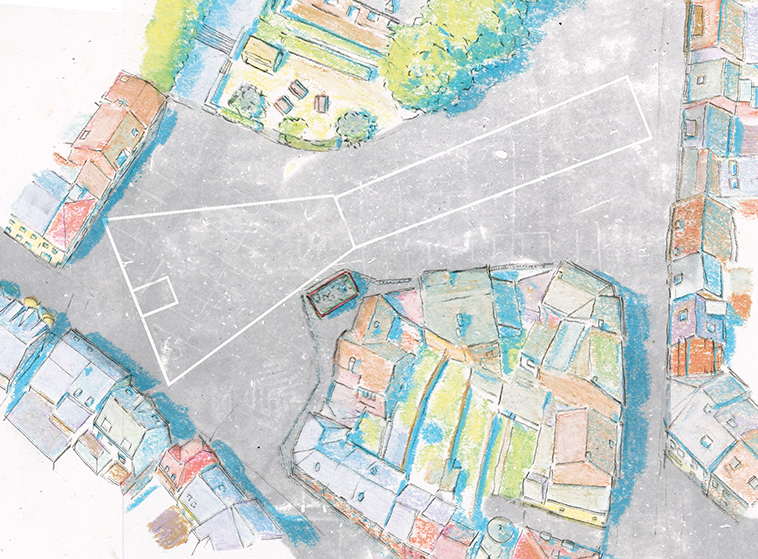
THE KING’S CUP
In this context, La Petite Reine Blanche starts from a simple observation. Ottignies, a small Belgian town, has lost its soul over the last thirty years. During our research, we discovered a photo from 1964 that forms the basis of the film. The Place du Centre in Ottignies used to host the King’s Cup, a pelota ball tournament that brought together all the teams from the town and the surrounding area. An important moment of the year, the royal family even sent its representatives. The crowds would gather around the ball park to the sound of a brass band. The pelota ball embodied this social link which is lacking today.
Since then, the Place du Centre has become a huge car park. Except for the chip shop and the bookshop, the shops have abandoned it for some years. Even if certain boundaries scratched by time or street names persist, the collective unconscious no longer seems to know this local heritage.
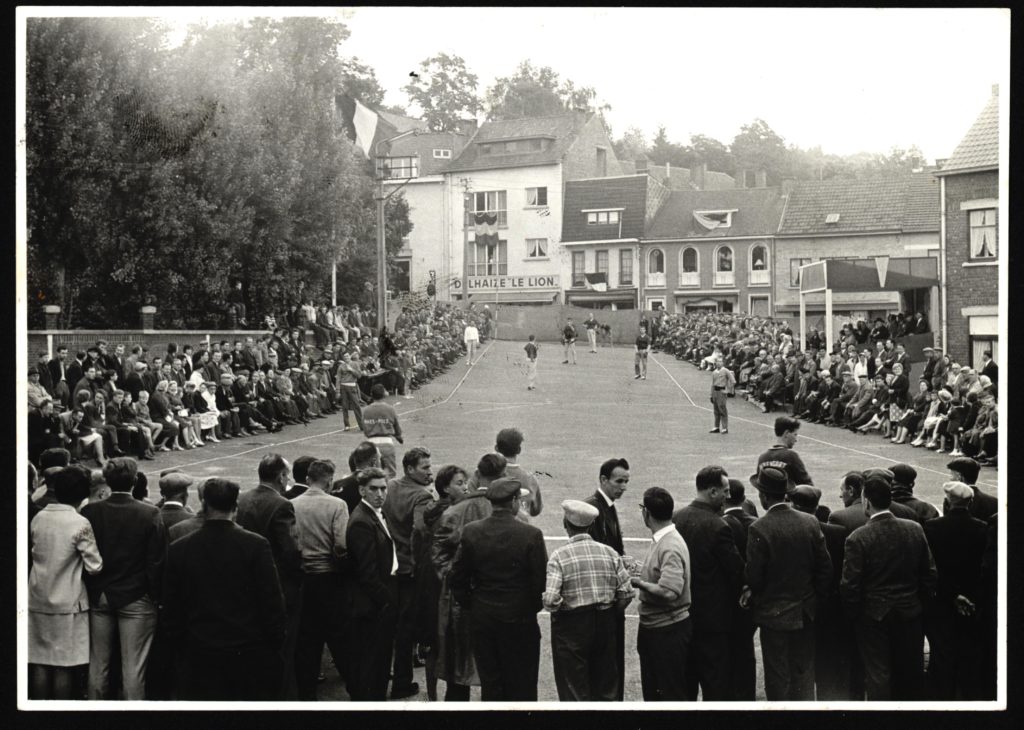
OTTIGNIES AND PELOTA BALL
To understand the reasons for this, we focused on the evolution of the pelota ball, a century-old game of palm played in village squares. Taking an interest in this game allowed us to discover a different historical and urbanistic aspect of our territory.
The disappearance of this sport from the public space became an ideal entry point to understand the current dynamics of the region. Our project is therefore inspired by the conflicting relationship between a growing number of cars and a sport that has been relegated to the outskirts of our towns and villages.
RAZE AND REBUILD
Demographic growth and the explosion in property prices have become major issues that are continually changing the Belgian landscape. Ottignies is not left out. With the arrival of the new university town of Louvain-la-Neuve and the construction of the Le Douaire and L’Esplanade shopping centres, commercial life has moved into enclosed spaces that have slowly killed off any neighbourhood spirit. Add to this phenomenon the construction of ballodromes on their own site, and we get a slow death of cafés, shops and the vibrant village identity for pelota ball played in the public square.
For the past thirty years, the town of Ottignies has been buying up the houses on the Place du Centre in order to raze it and build a new project. The will of the Ottignies town council is to revitalise the city centre. Although a popular consultation is being considered, one of the possibilities is to densify this area while creating a one-way traffic system. However, Ottignies is difficult to reach at peak times, with traffic jams being a daily occurrence.
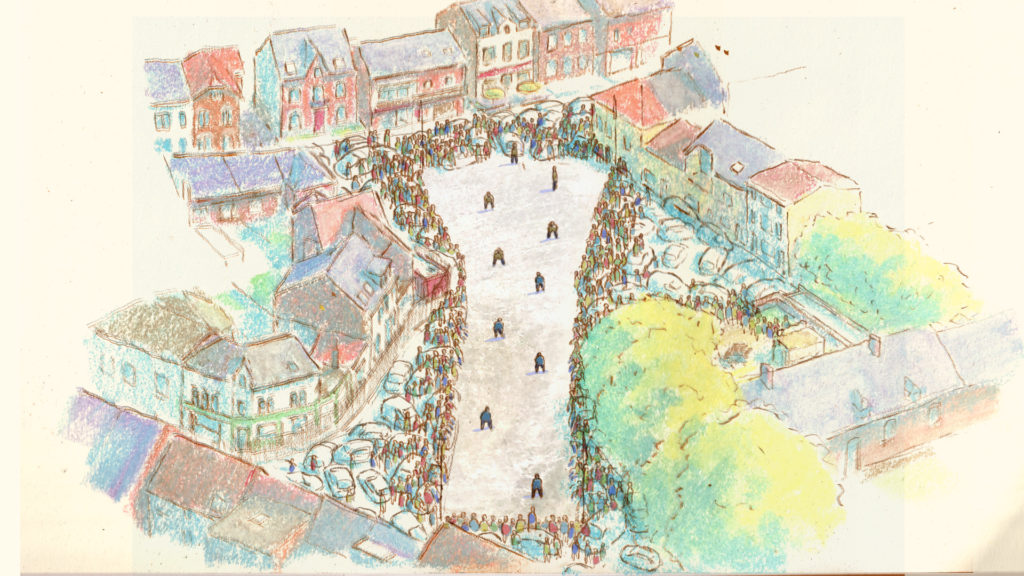
TERRITORIAL GAIN
Although the pelota ball is used as a tool for the reappropriation of the territory in our film, it is first and foremost a game of territorial gain. The aim of this paragraph is to make you understand the parallel between the principle of territorial gain and the private/public struggle that fuels The Little White Queen. Pelota ball is based on the principle of conquering and defending territory. Two teams of five players play on either side of a field divided in two, but whose territorial distribution between the two changes.
During the match, the yellow team will sometimes have to defend a 5m long field and sometimes a 60m long field. The aim is to send a ball back across the back lines to score a point. As in tennis, the ball must go over the net. The differences are that there is not one but two nets and they are invisible. They move all over the court according to the previous ball exchanges, creating these shifting proportions.
In conclusion, the pelota ball and its territorial gain principle are a reflection of the struggle between cars and the soul of Ottignies, between the public square and private spaces.
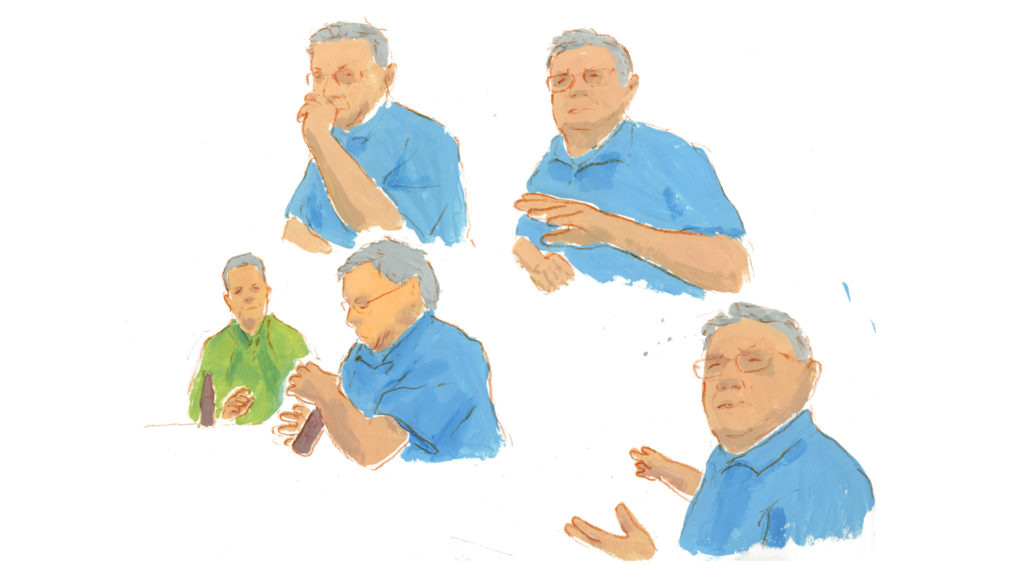
FIELDWORK
The Little White Queen is based on fieldwork begun in 2019. Between the territory of Ottignies and the world of pelota ball, the approach was initially documentary. With his training at ENSAV la Cambre in ‘Urban Space’, Théo Hanosset conducted the first historical and territorial research to understand the issues of the province of Walloon Brabant. When the pelota ball appeared to be an interesting subject, Mathieu Georis joined the project. This was the starting point for our joint creation.
In its recent history, the province of Walloon Brabant experienced a key moment at the end of the 1960s: the arrival of Louvain-la-Neuve. A fully-fledged pedestrian city and student campus, its construction in the early 1970s drastically changed the face of an entire region. We therefore focused our research on the evolution of pelota ball in the municipality of Ottignies-Louvain-la-Neuve.
To create our narrative, we had to bring together a territorial issue and the game of the palm. The leads led us to the De Moffarts family, active in the city’s pelota ball club. This family lives in the alternative neighbourhood of La Baraque, which is threatened by the Courbevoie, a new neighbourhood representative of the real estate pressure in Louvain-la-Neuve. The problem was stimulating, but the film Quartier Libre had already dealt with the subject. It was at this point that we focused on the photo of the King’s Cup and on the urban planning issues in the town of Ottignies.
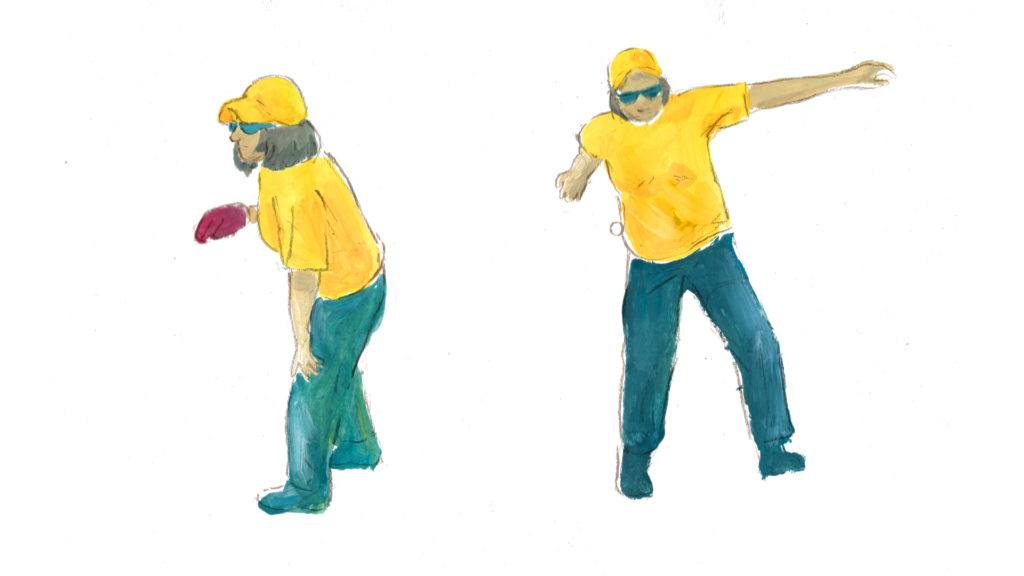
Graphic tests – © Mathieu Georis 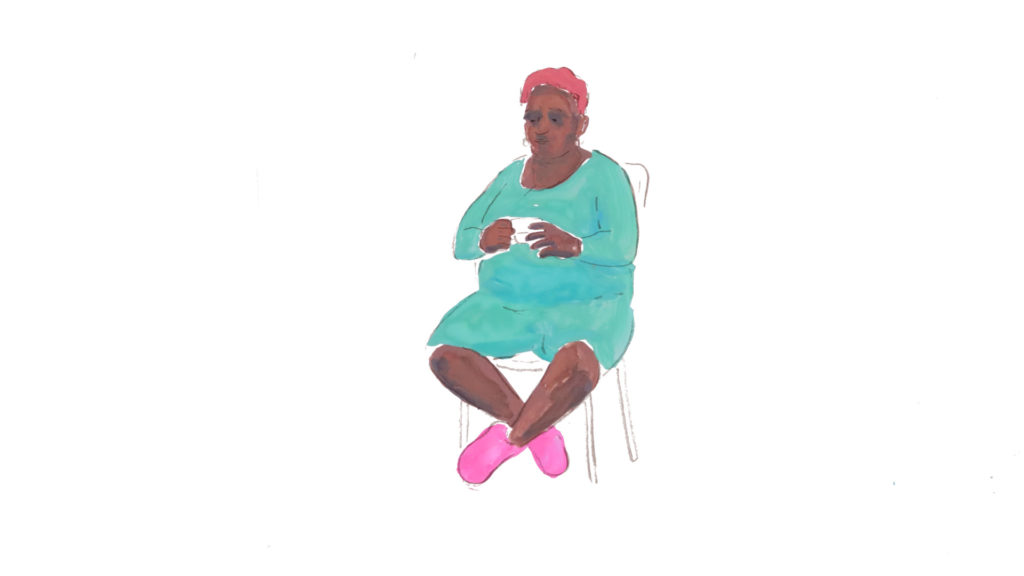
Graphic tests – © Mathieu Georis 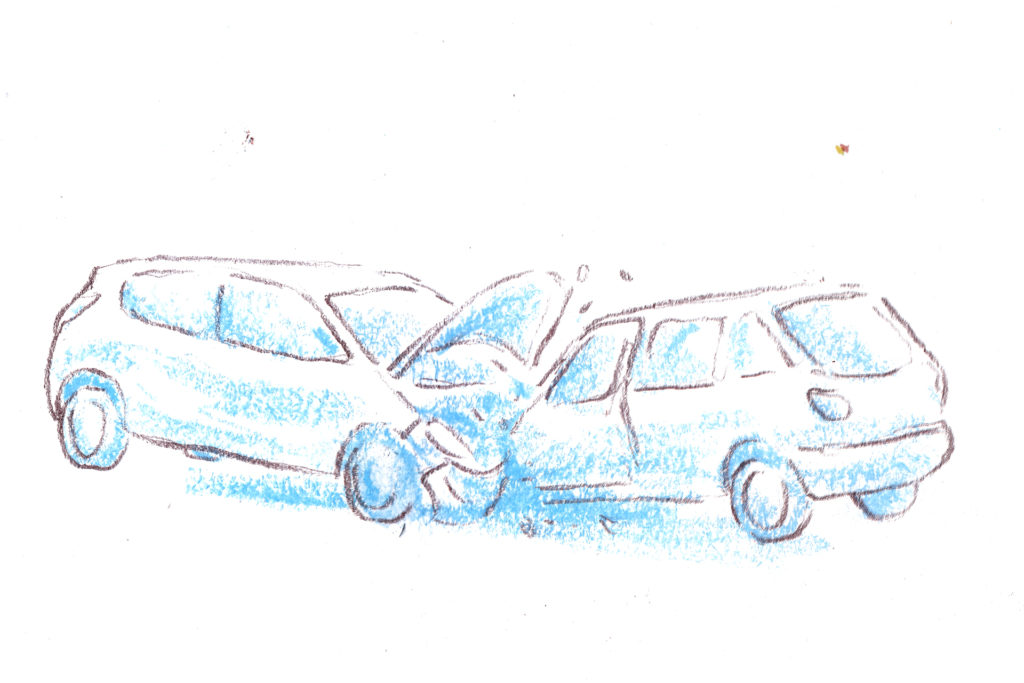
Graphic tests – © Mathieu Georis